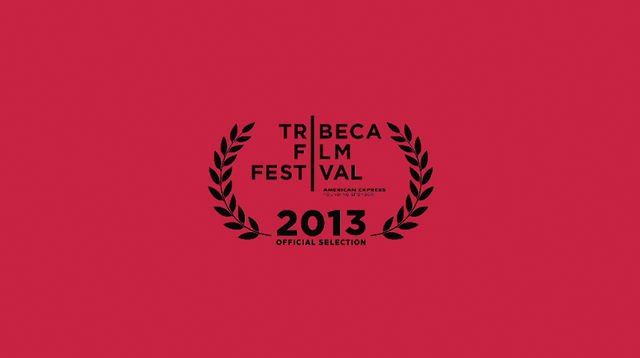Oh, hi Tribeca Film Festival! With this year’s lineup, you may have edged out SXSW as my favorite place to discover documentaries. Sundance continues to snap up the marquee fictional narrative films (Fruitvale Station and The Spectacular Now come to mind), and with the New York Film Festival, New Directors/New Films, and BAMcinemaFest on local turf, it’s not easy to compete. But this year’s Tribeca documentaries were really stellar. Or is it just that a lot of the best work in American independent film is being done in the documentary form right now? Without billionaire cinephile Megan Ellison, we wouldn’t have The Master or Springbreakers, but, hey, Zach Braff’s Kickstarter has raised over $2.4 million, so what do I know? Perhaps indie film is alive and quirking.
Whatever the case, the documentaries I saw at the 2013 Tribeca Film Festival were the standout films. Truth can’t only be stranger than fiction, but also more daring and intimate. The docs took an inventive approach to form, finding a visual language that was right for each story. A couple of the fictional narrative films held their own, as did some very interesting short films. But there was such a wide offering at the festival, from a solid series of industry panels (many of them free!) to Darren Aronofsky interviewing Clint Eastwood (no chair malfunctions!), that it was easy to get distracted. I even checked out the transmedia installation, a move very much against habit for someone whose last video game experience was cartridge-era Super Mario Brothers. The 2013 Tribeca Film Festival was an embarrassment of riches, and here are some of my highlights.
Let The Fire Burn (Jason Osder)
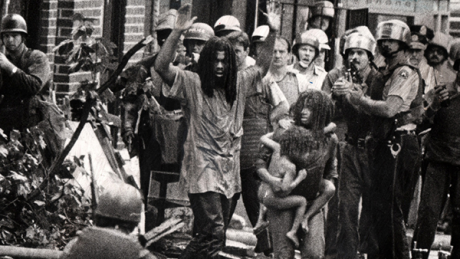
Jason Osder’s meticulously edited all-archival film was my favorite Tribeca film of this year. It revisits a historical event from 1985, when Philadelphia police raided the compound of black separatist group MOVE and their longstanding antagonism took a horrifying, violent turn. The plan to “evict” the MOVE members led authorities to flood their house, first with water, then a barrage of gunfire, and finally to firebomb it, resulting in the deaths of 11 members (including 5 children) and the destruction of over 60 homes in a working-class black neighborhood. Osder is careful to give us the backstory and to take us through the events that led to the escalation of tensions. He resists turning the MOVE members into martyrs, showing the aspects of their philosophies and actions that are not unproblematic. But, in the end, the film is about the moral darkness that can enable a city to commit unthinkable acts against its own citizens. Osder is a professor of media and public affairs, and the film has a cerebral, icy elegance. But the decision to use only archival material is also what makes the film so powerful. No talking heads, no spin, we relive the story and judge for ourselves. I’d rank it alongside The Times of Harvey Milk as a classic documentary on civil rights and power in America.
Oxyana (Sean Dunne)
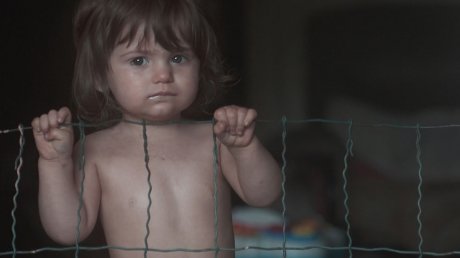
Director Sean Dunne is probably best known for his undeniably awesome short doc American Juggalo. Although drawing on some similar themes (and characters), expect something quite different from his feature doc Oxyana, a portrait of a West Virginia town ravaged by (Oxycontin) addiction. This is not an issue doc — other than floating vague theories linked to the area’s mining industry and to overprescription, the film says very little about why or how this happened. Dunne lets his subjects do all the talking, and they are painfully open with him, filtering nothing for the camera. The subjects sometimes drop into accents so thick they’re indecipherable, but there’s nothing ambiguous about needles in veins, and Dunne builds his film on those hard images. The film stands out not only for its intimacy with harsh, broken lives, but also for the obvious craft and care that went into the production. It’s beautifully shot by Hillary Spera (who also filmed American Juggalo and the upcoming abortion doc After Tiller), with a score by country singer Jonny Fritz and Deer Tick’s John McCauley. With Dunne’s vision, I’m willing to trade context for an unwavering experience.
Lenny Cooke (Josh & Benny Safdie)
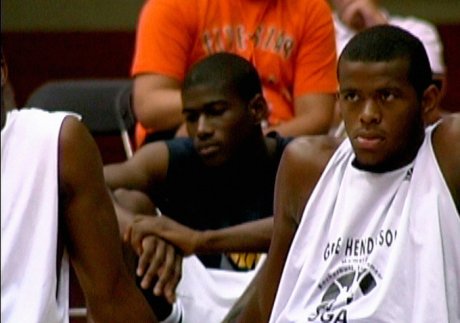
In the early 2000s, producer Adam Shopkorn began filming a high school basketball phenom named Lenny Cooke, capturing the rise of a nationally ranked player on the level of Carmelo Anthony and LeBron James. But Lenny failed to get drafted by the NBA, then began a slow descent through minor leagues, and eventually out of basketball entirely. Shopkorn shelved the project for years, before eventually bringing filmmakers Josh and Benny Safdie on board to track Lenny down after the fall. The doc fuses the two parts of Lenny’s story into a haunting character study of unrealized potential.
Elaine Stritch: Shoot Me (Chiemi Karasawa)

Director Chiemi Karasawa keeps the camera hovering around Elaine Stritch like a doting fan, but is there any other way? All a seasoned entertainer and talent like Stritch needs is an audience. The camera follows Stritch from her home at the Carlyle Hotel to her various performances and roles, from classic cabaret to the set of 30 Rock (she played Jack Donaghy’s mother Colleen). She’d be a real sassypants if she actually wore pants — at the age of 88, she still goes on stage rocking only a classic white shirt and black tights. But showbiz is not all cocktails and comedy: Stritch is a recovered alcoholic who suffers from diabetes and lands in the hospital several times during the film. With a candor and lack of vanity unthinkable among today’s “starlets,” we are allowed to follow her there too.Thoughtful, funny, and fiercely brave about her own mortality, Elaine Stritch remains a class act in an era with no standards.
Sunlight Jr. (Laurie Collyer)
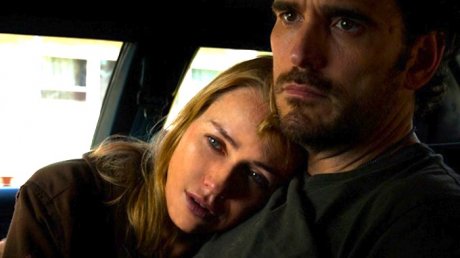
Following her earlier films, the doc Nuyorican Dream and Sherrybaby, writer/director Laurie Collyer returns with a drama inspired by journalist Barbara Ehrenreich’s Nickel and Dimed, an investigative book about surviving on minimum wage. Collyer writes female characters with the skill and sharp wit of Nicole Holofcener, but politicized and focused on the working class. Set amidst the strip mall glories of South Florida, Naomi Watts plays a convenience store clerk who lives in a motel with her boyfriend (Matt Dillon), who’s disabled and in a wheelchair. They make ends meet, not unhappily, until her unintended pregnancy brings them together, then slowly tears them apart. It’s a tough, unusual drama, highly attuned to the financial realities of its characters and unafraid to let that force shape the narrative, with a bold third act that really sets the film apart from similar American indies.
Shorties:
RPG OKC (Emily Carmichael): Emily Carmichael’s animated film imagines what would happen if two characters from 8-bit role-playing video games met online à la OkCupid. Extra points for the weird, in-character cadence of the dialogue (watch the film here).
Robots in Residence (Brent Hoff, Alexander Reben): Part of Tribeca’s transmedia Storyscapes program, the filmmakers built little Wall-E-type robots called Blabdroids, equipped with digital cameras, then sent them rolling around New York asking people “the questions we don’t ask each other.” The project is based on the ELIZA effect, a computer science theory that people engage emotionally with artificial intelligence. At the installation, everyone was cooing over these smiling cardboard boxes on wheels, so, theory confirmed!
Honorable Mentions (Sundance premieres I saw at Tribeca and am not gonna write a lot about):
Before Midnight (Richard Linklater): The third film following the other Before… movies, Jesse and Celeste flirt and fight their way through marriage and parenthood while on a vacation in Greece. Sharper and possibly sadder than the other films, the scripted dialogue unfurls over long tracking shots of walking and talking.
Cutie and the Boxer (Zachary Heinzerling): Another dubious endorsement of matrimony. A portrait of couple Ushio and Noriko Shinohara, two Japanese artists living in a DUMBO loft and still battling each other four decades after they met. The title of their joint gallery show, “Love is a Roarrr,” kind of says it all.
